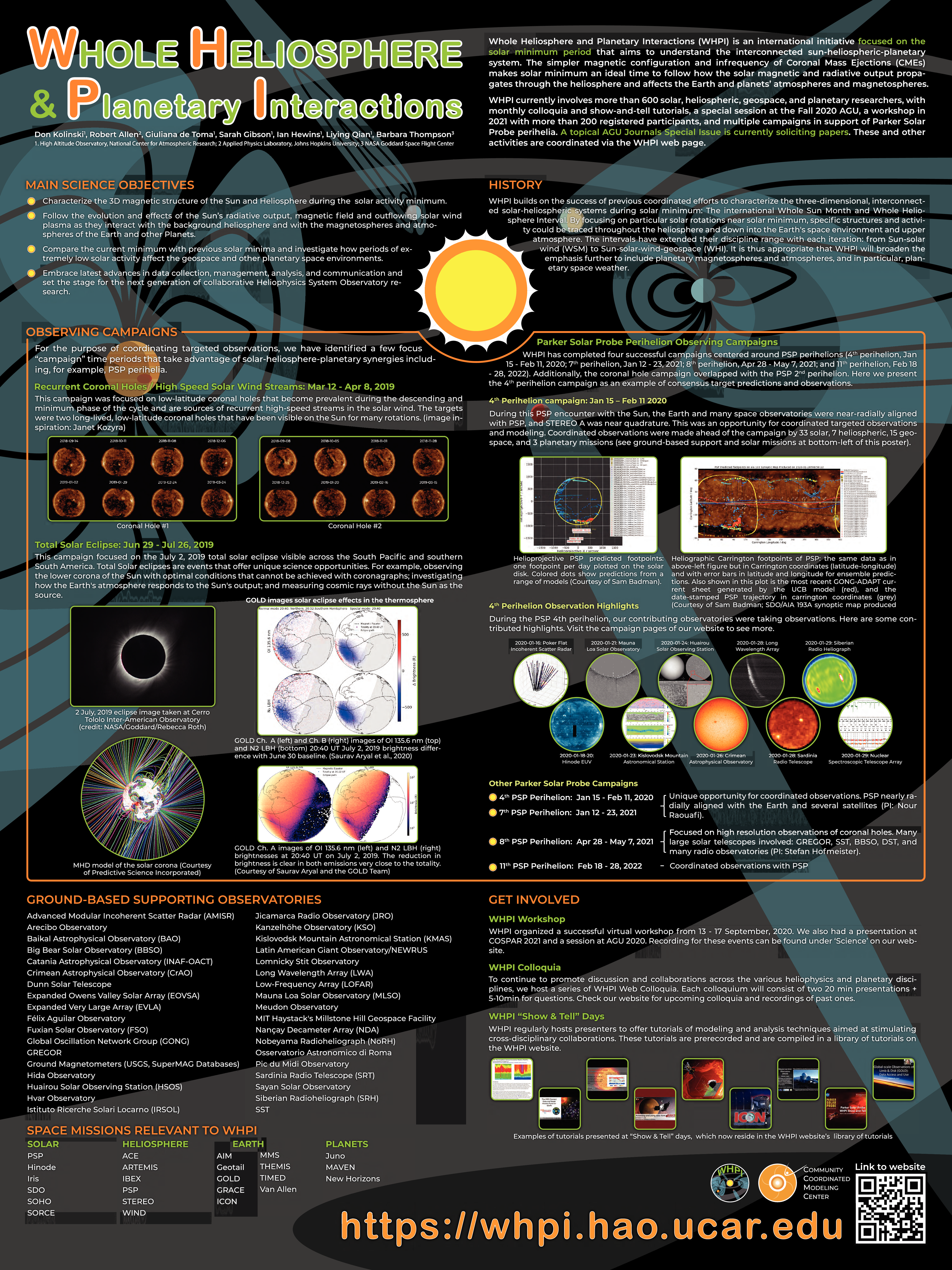Authors: Don Kolinski (High Altitude Observatory, National Center for Atmospheric Research), Robert Allen (Applied Physics Laboratory, Johns Hopkins University), Giuliana de Toma (High Altitude Observatory, National Center for Atmospheric Research), Sarah Gibson (High Altitude Observatory, National Center for Atmospheric Research), Ian Hewins (High Altitude Observatory, National Center for Atmospheric Research), Liying Qian (High Altitude Observatory, National Center for Atmospheric Research), Barbara Thompson (NASA Goddard Space Flight Center)
Whole Heliosphere and Planetary Interactions (WHPI) is an international initiative focused on the solar
minimum period that aims to understand the interconnected sun-heliospheric-planetary system. The
simpler magnetic configuration and infrequency of Coronal Mass Ejections (CMEs) makes solar
minimum an ideal time to follow how the solar magnetic and radiative output propagates through the
heliosphere and affects the Earth and planets’ atmospheres and magnetospheres. WHPI currently
involves more than 600 solar, heliospheric, geospace, and planetary researchers, with monthly
colloquia and show-and-tell tutorials, a special session at the Fall 2020 AGU, a workshop in 2021 with
more than 200 registered participants, and multiple campaigns in support of Parker Solar Probe
perihelia. A topical AGU Journals Special Issue is currently soliciting papers. These and other activities
are coordinated via the WHPI web page (https://whpi.hao.ucar.edu/).


